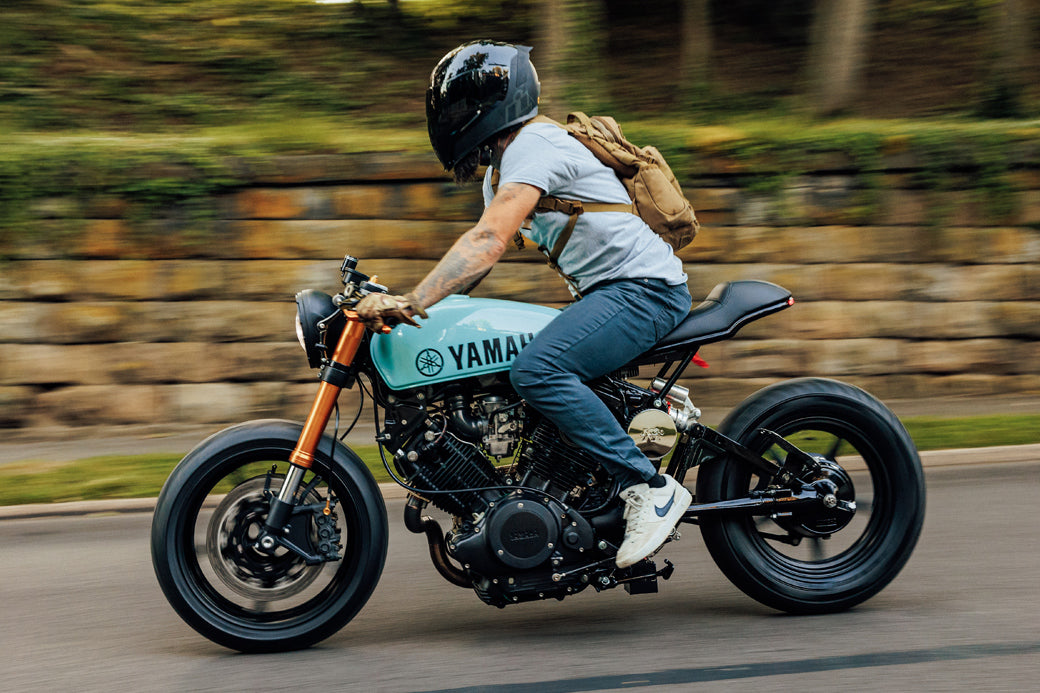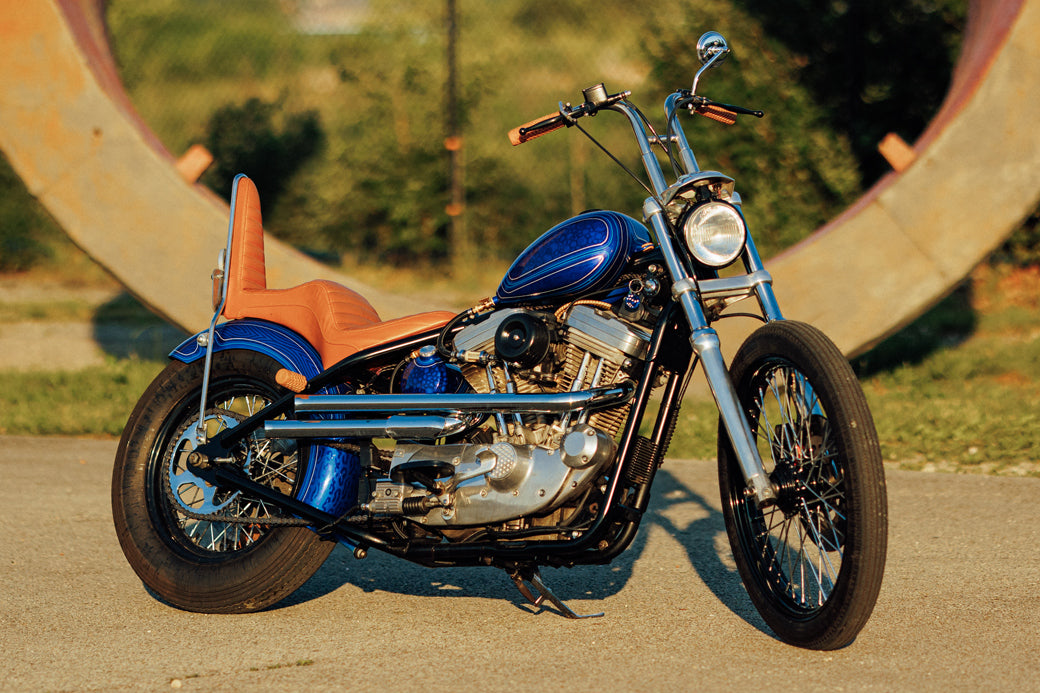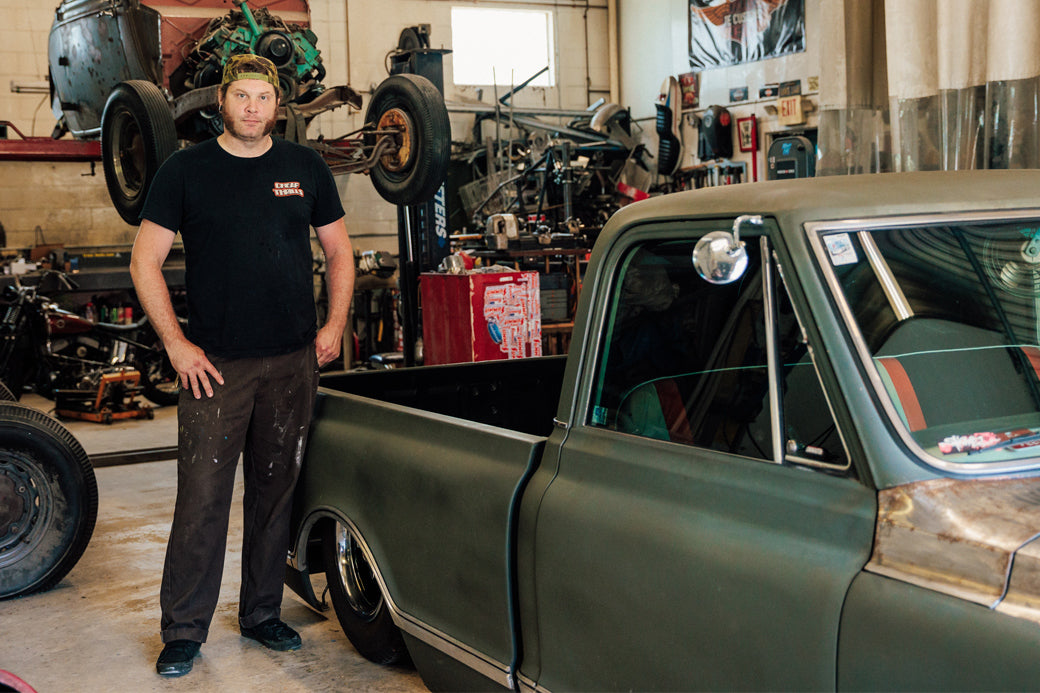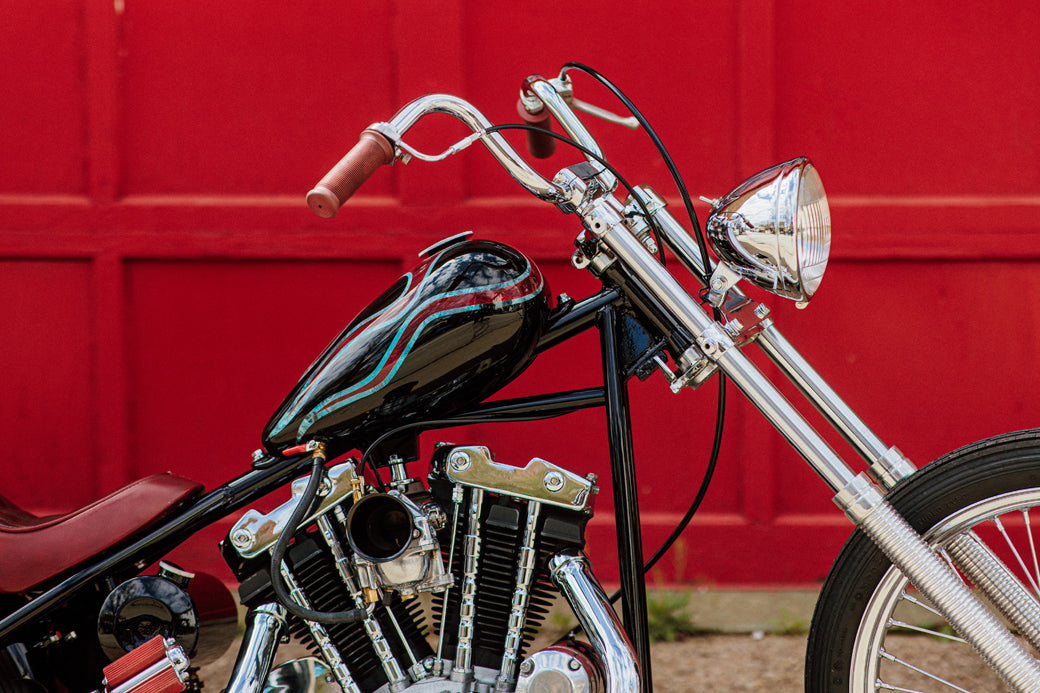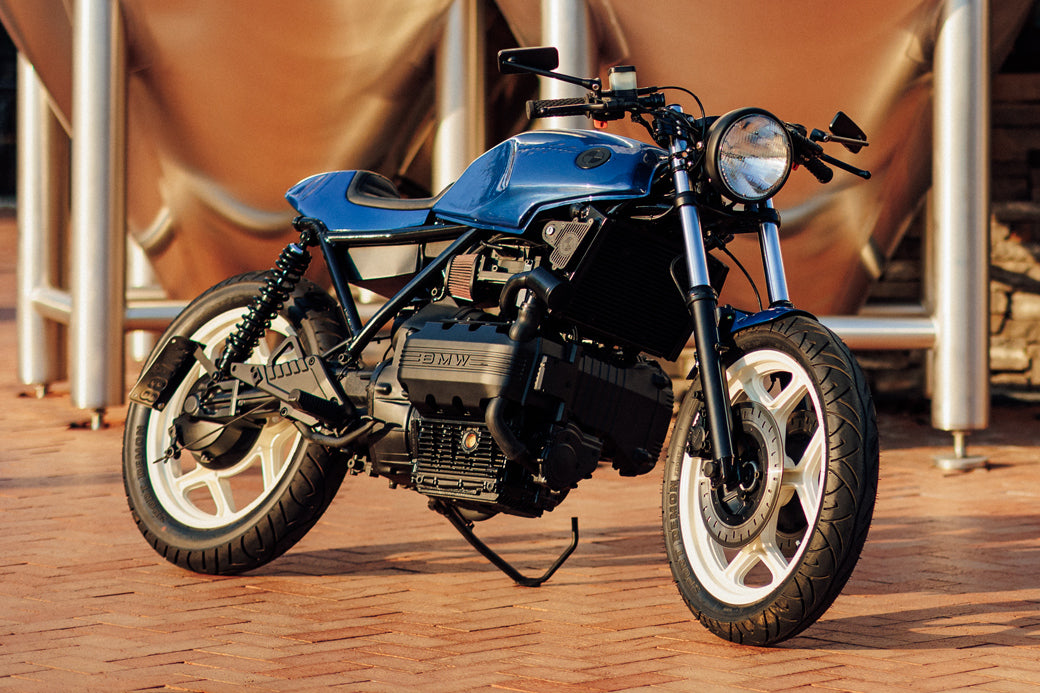Nick Miller: I’m a history nerd. I’ve always been into history and even studied it in college. To me, it’s not really about it being a challenge but rather trying to stay true to an era. It’s about preserving history in a way. I like the idea that you could find aged photographs in some old guy’s toolbox, and you might see a bike that looked similar to this. That was the appeal to me. With this bike, I tried not to use many parts that were too new for the era. So, even though some stuff like the exhaust was new, it was a style that they were using back in the 1960s. That was the idea behind it, but there are exceptions. For instance, I got an adapter to run this air cleaner on a Super E carburetor. They didn’t run these carbs back then, but because the bike was stroked, I couldn’t keep a Linkert on it.

NM: Something that annoys my wife a lot is that I am buying stuff constantly. It might not necessarily be a part I’ll use right away, but I will hold onto it until the next project comes along. Sometimes you can find one piece that changes the whole direction you’re going.
NM: It’s a 1955 FLH engine with 1963-65 outside oiler heads. The transmission is from a 1947 knucklehead, and the frame is a 1949-51. This wasn’t a candidate for a restoration because some pieces on the frame had been cut off. I put a lot of them back on, but it’s still not perfect. So, it lent itself more to being a chopper. The coolest thing about it for me is that there are parts I got off of friends, and I had a group of people help me build it. Someone else made the sissy bar and seat, and I was fortunate enough that some close buddies added their touch. A lot of stuff you can do by yourself, but it’s more fun to work on it with friends. Instead of being considered the builder of this bike, I think of myself more as a proud caretaker.
NM: When people think about 60s style choppers, most of them were all rigid frame panheads. To me, it had to be a wishbone frame. That was what everyone was using in that period. It couldn’t have been a shovelhead motor—it had to be a panhead. I really wanted to use an I-beam springer because there are so many people running inline springers already. I also wanted old school dogbone risers because it was common then. Most of the parts are all things you could’ve got in that era.


NM: It took a lot longer than it needed to be. It was originally a complete bike that I eventually picked up off someone who beat me to the original sale. I rode it for about a year while collecting parts to make it how I wanted. I always had multiple bikes, so I was never really rushed to get anything done. As I found stuff or got the money, I’d slowly piece it together. We’re in this age demographic where none of us were around when it actually happened, so to do one now there’s only a handful of guys in the area to reference. The young guys have to share knowledge and ideas, and a lot of it comes down to guessing. You can’t take a bike like this to a dealership because they don’t want to touch it.
NM: I grew up around a lot of old cars. One winter I decided I wanted to get a motorcycle, and I bought myself a Sportster like everyone else. I had never ridden one, so after the bike was ready I taught myself how to ride. After that, I wanted an old bike and got my first shovelhead to chop. I had no idea what I was doing, so I was mixing old and new stuff. I never finished it but bought another and started over. So at that point, I had told myself I was really going to do it right this time by reading and referencing more. I learned by reading a lot, talking to older gentlemen, and studying old photos. As cheesy as it sounds, even just a Google search for 60s style choppers gives you a plethora of information. I don’t sleep much, so I just dove in headfirst.















